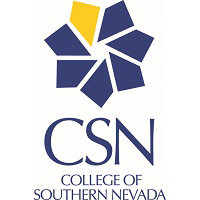Below is a summary of the abstract you submitted. Presenting author(s) is shown in bold.
If any changes need to be made, you can modify the abstract or change the authors.
You can also download a .docx version of this abstract.
If there are any problems, please email Dan at dar78@pitt.edu and he'll take care of them!
This abstract was last modified on March 17, 2021 at 12:07 a.m..

Viruses that infect and reproduce within bacterial cells, known as bacteriophages, have been sparingly used in medical practices that aid in health hazards caused by dangerous bacterial infections. Although this is not a common practice for phages at this time, they have potential to treat life-threatening infections in the future. Faculty and students in SEA-PHAGES work to discover novel phages through environmental samples isolated across many countries around the world. This has led to the discovery of thousands of unique phages since the start of the program in 2008. The SEA-PHAGES program has not only grown significantly since its inception, it also continues to contribute new data about phages and allows undergraduates to have genuine research experiences.
In fall of 2020, College of Southern Nevada (CSN) students isolated several novel bacteriophages; two of the discovered phages, Figliar and AnarQue, were chosen for genetic annotation this spring. These phages were chosen for bioinformatics exploration because they were both found to be lytic viruses with different characteristics and origins of isolation. AnarQue was found in the Clark Country Wetlands Nature Preserve where Figliar was found in a local dog park. AnarQue formed clear plaques that were approximately 3mm in diameter whereas Figliar formed slightly cloudy plaques with a 1mm-2mm diameter. Figliar was isolated through enriched culture, after being incubated with host bacteria Gordonia rubripertincta NRRL B-16540. AnarQue was isolated directly from the soil sample. After isolation and purification, the research team was able to capture images of these two bacteriophages by electron microscopy. Both viruses were identified as the Siphoviridae morphotype.
For spring of 2021, the SEA-PHAGES team at CSN have almost completely annotated Figliar using DNA Master and several other online bioinformatics tools. We not only compared Figliar to other phage genomes in the same cluster (DJ cluster), we also identified potential starts for all genes and assigned putative functions to many genes. Although our research is still ongoing, we found Figliar to be unique as it contains all forward facing genes, a thyX-like thymidylate synthase, a deoxycytidylate deaminase, and 8 membrane proteins in a row. By using an online bioinformatics tool, Phamerator, we anticipate AnarQue may have one frameshift and multiple reverse genes. We are making great strides at understanding the nature of these novel phages because they may be useful in future medical studies involving the use of bacteriophage therapy for human and animal health.

